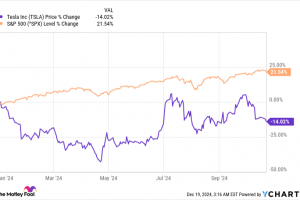
U.S. stocks fell sharply on Friday to suffer their biggest one-day drop since 2020, as investors continued to weigh hawkish comments on interest rates a day earlier by Federal Reserve Chairman Jerome Powell, as well as a fresh batch of corporate earnings that largely disappointed.
How did stocks trade?
The Dow Jones Industrial Average
DJIA,
-2.82%
fell 981.36 points, or 2.8%, to close at 33,811.40, after declining 1,019 points at its session low. The blue-chip gauge saw its steepest one-day percentage loss since Oct. 28, 2020.
The S&P 500
SPX,
-2.77%
dropped 121.88 points, or 2.8%, to end at 4,271.78.
The Nasdaq Composite
COMP,
-2.55%
finished at 12,839.29 after a drop of 335.35 points, or 2.6%. The S&P 500 and Nasdaq each suffered their biggest one-day drops since March 7.
The Dow and S&P 500 on Friday posted their lowest finishes since March 15, while the Nasdaq closed at its lowest since March 14.
On Thursday, stocks gave up strong gains, reversing sharply lower. With Friday’s plunge, the Dow suffered a 1.9% weekly decline, its fourth straight loss. The S&P 500 dropped 2.8% and the Nasdaq tumbled 3.8% for their third consecutive weekly drops.
What drove the market?
Stock-market weakness picked up Friday where Thursday’s selloff left off, when equities tumbled into the afternoon after Powell added his support for moving faster on raising interest rates to cool inflation, measures that would include a possible 50 basis point interest rate hike in May.
“It would seem investors have been too complacent about the upcoming [Fed] meeting, which will need to change,” said Michael Kramer, founder of Mott Capital, in a note.
The Cboe Volatility Index
VIX,
+24.38%,
an options-based measure of expected volatility over the next 30 days, had been too low heading into the May 3-4 Federal Open Market Committee, or FOMC, meeting, Kramer said. It rose Thursday and was…
..






